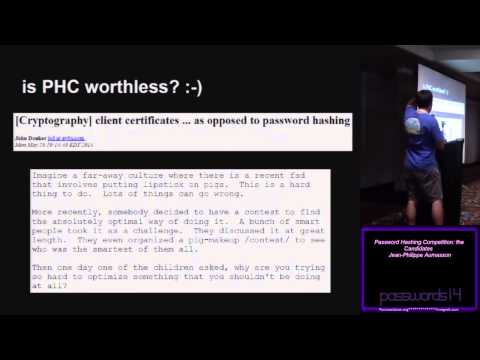Description:
Explore the candidates for Password Hashing Competition (PHC) in this conference talk by JP Aumasson. Dive into the details of various password hashing algorithms, including Antcrypt, Argon, battcrypt, Catena, Centrifuge, Gambit, Lanarea, Lyra2, Omega Crypt, PolyPassHash, POMELO, Pufferfish, RIG, Tortuga, Yarn, and yescrypt. Learn about their unique features, cryptographic primitives used, memory and time parameters, and security considerations. Gain insights into the evaluation criteria for these algorithms, including security, efficiency ratio, simplicity, and extra functionalities. Understand the importance of third-party implementations and cryptanalysis in assessing the strength of these password hashing solutions.

The Candidates for Password Hashing Competition - JP Aumasson
Add to list
#Computer Science
#Cryptography
#Password Hashing
#Information Security (InfoSec)
#Cybersecurity
#Algorithms
#Encryption
#Data Protection
#Cryptanalysis